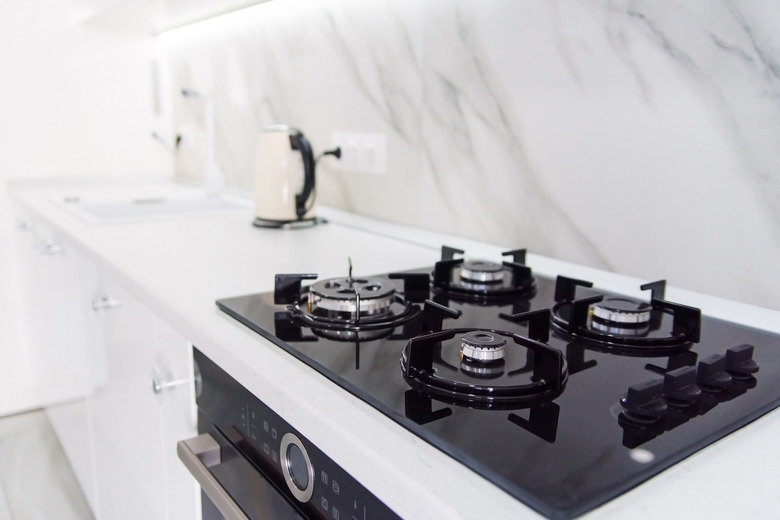How To Get Black Scorch Marks Off Gas Burners & A Stove Top
Gas burners are the preferred cooking method of restaurant chefs and serious home cooks. Unlike electrical ranges, gas burners can get very hot very quickly, which is a must for searing and other cooking procedures that require high, even applications of heat to the pan. Unfortunately, along with this cooking strength comes heat that can leave unsightly scorch marks on your gas burners and stove top. However, these can be cleared away with the right products.
Cleaning Burnt Stove Top Burners
Cleaning Burnt Stove Top Burners
Ceramic stove tops can give your kitchen a nice clean look with a minimal amount of fuss. Stove tops typically have between two and six burners on them, and though the high heat these stoves can attain is part of what makes them desirable, it is also what can cause scorch marks that are very difficult to clean.
People might sink into despair when they fear that they've permanently scorched their stove top. However, to remove burn marks from a ceramic stove top, or to remove burn marks from a glass top, all you'll need is time, patience and the proper tools.
Burn marks will occur no matter how careful, practical and attentive you are. It's nearly impossible for even the most diligent home cook to not get a few burn marks on their stove top. Depending on the material of your stove top and the severity of the burn, there are several methods you can use to ensure that you clean your stove top without damaging it.
Remove Burn Marks From Glass
Remove Burn Marks From Glass
In the case of a glass stove top, you likely have an electric stove. Most electric stoves don't get as hot as gas grills, which tend to have ceramic stove tops. Still, gas stove tops can easily acquire black scorch marks that can cause significant stress since they don't wipe away easily. These can be caused by hot water or hot liquids, like sauces or jams, sliding over the side and clinging to the surface of the stove.
You don't need a glass stove top cleaner for this, instead, you can use household items. First, use a damp cloth soaked with warm water to wipe down the surface of the stove top and make sure that you've gotten rid of any loose bits of debris or food. After doing this, you should be left only with the burn marks.
Once you've cleared the top of the stove of any remaining crumbs and debris, you should sprinkle the entire surface with baking soda. Allow the baking soda to sit on the stove for a few minutes, giving the soda time to alkalinize any remaining solids or grime that you can't see. Next, spray the surface of the stove with vinegar and slowly work the baking soda and vinegar into a paste, gently scrubbing at the scorch marks until they are removed.
Removing Scorch from Ceramic Cooktop
Removing Scorch from Ceramic Cooktop
You will use similar tools and materials to clean a ceramic cooktop as you would clean a glass top. However, you can go a little harder with the baking soda and the scrubbing on a ceramic cooktop. Unlike glass stove tops, ceramic stove tops don't present the same danger of scratching. It's relatively easy to scrub at a ceramic stove top without fear of doing serious, permanent damage to your stove.
Using baking soda and vinegar, scrub the scorch marks, beginning at the outer corner of the mark and working your way inward. After you've scrubbed, rinse the area with warm water to loosen any remaining burnt bits clinging to the surface. Repeat the process until the burn marks are gone.
Once you've successfully cleared the burn marks from the surface of the stove, follow up with an additional spray of vinegar to remove any remaining baking soda residue. This will clear the stove's surface of dulling grit.
